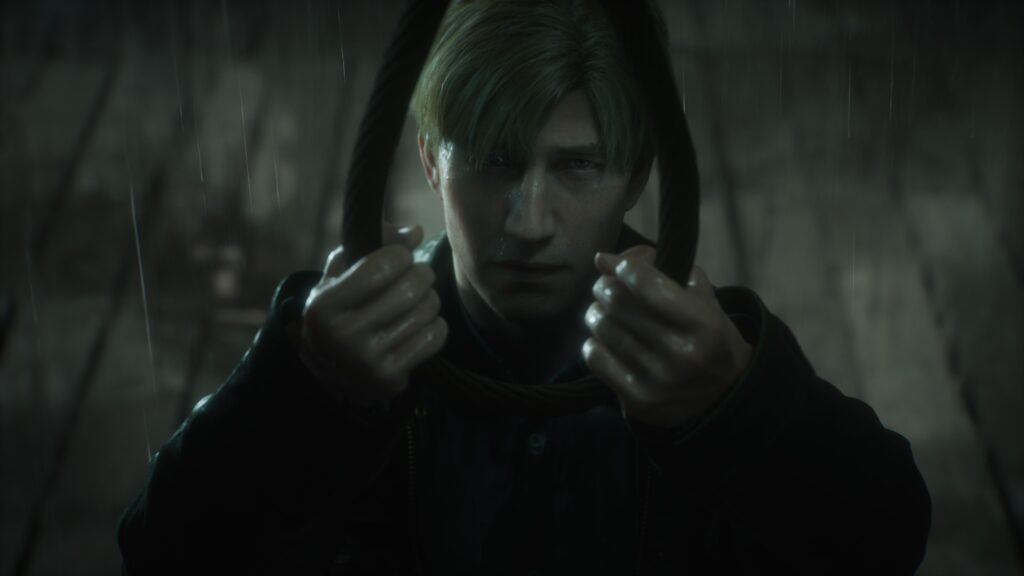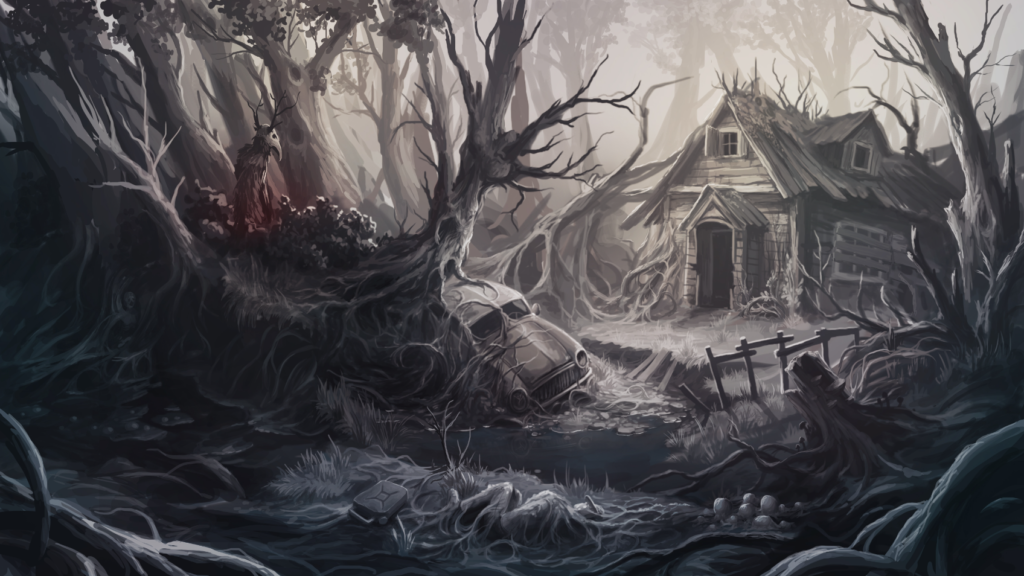Played on an LG C3 55” OLED Display via Steam, AMD 7900 XTX and i9-10900k.
Publisher: Konami
Developer: Bloober Team
We all have moments that linger in our minds, haunting us forever: not telling the one we love how much they mean before it’s too late, not standing up for ourselves when it mattered most. When we meet James Sunderland, the protagonist of Silent Hill 2, he is a man consumed by regret and depression. He stares at his reflection in the cracked mirror of a roadside bathroom—a snapshot of a soul adrift. James is lost, utterly alone, after losing his wife, Mary, to a prolonged battle with an incurable disease. For years, he watched her slowly succumb, grappling with longing for a better life, despair over her inevitable demise, and the hopelessness of being powerless to change her fate. It’s been three years since her death, yet one day, a letter arrives—written in Mary’s own hand.

“In my restless dreams, I see that town. Silent Hill. You promised you’d take me there again someday. But you never did. Well, I’m alone there now. In our ‘special place.’ Waiting for you.”
James knows it’s impossible—Mary is gone. But with nothing left to lose, he ventures to Silent Hill, clinging to the fragile hope that the impossible might somehow be real. What he finds are fog-choked streets, a desolate town, and a descent into the deepest recesses of the human psyche.
Bloober Team’s Silent Hill 2 Remake masterfully balances reverence for the original with thoughtful modern enhancements. It retains the essence of what made the 2001 classic unforgettable while introducing updates that elevate the experience. From the moment James steps onto the overlook and begins his descent into the titular vacation town, the game immerses you in its haunting atmosphere of despair and unease.
Atmosphere
Silent Hill feels more alive than ever—or rather, more hauntingly dead. The fog is a character in its own right, enveloping the town in a cold, formless grip. It shrouds everything, obscuring threats until they’re perilously close. Rust streaks down the sides of buildings like old scars, while trash-strewn streets are littered with decaying vehicles. The town’s former inhabitants are long gone; those who remain are lost souls drawn to Silent Hill in search of resolution or answers to their inner turmoil.


The environments in Silent Hill 2 are painstakingly detailed, each location telling its own story of abandonment and decay. From the dingy apartments of Woodside to the shadowed bowling alleys, mental institutions, and forgotten vacation suites, every setting feels like a snapshot of lives left behind. The birthday balloons still floating in an empty apartment, the blood-streaked padded walls of Brookhaven Hospital, the ashtrays littered with cigarette butts in Neely’s Bar—these details paint a vivid portrait of a town suspended in a state of tragic limbo. Notes and artifacts expand upon the lore, drawing you further into the grim tapestry of Silent Hill.
The town itself changes as you progress, often in unsettling, abrupt ways. One standout moment occurs early in the game, when retrieving the key to the apartments seems to awaken Silent Hill. The fog thickens, the wind howls, and monsters emerge en masse. Lying Figures crawl from beneath cars, through fence posts, and over walls. The sounds escalate—a cacophony of wind, static, and distant howls—until it becomes almost impossible to hear the creatures’ guttural growls. Blind and deaf with panic, you stumble toward the apartment, barely escaping. Then, as the door closes behind you, the chaos gives way to an oppressive silence, leaving you disoriented and on edge.
Transitions into the “other world” are equally jarring. Familiar walls seem to slough off, revealing corroded metal skeletons beneath. Beds and furniture resemble decaying flesh, and fleshy tendrils wrap around exposed wires. The world plunges into an endless abyss, filled with the chittering of insects, both seen and unseen, and the static of James’ radio—a constant reminder that you’re never truly alone.
Every area dares you to explore. Whether breaking into a car for a health drink or scavenging ammo from a derelict building, you must weigh the risk of encountering unseen horrors. A seemingly empty street might conceal an enemy lurking beneath a vehicle, ready to strike. The tension of deciding whether to risk it or retreat adds a layer of strategy to survival.

Combat
The original Silent Hill 2 was never known for its combat, which felt clunky and rudimentary. Bloober Team addresses this, introducing a revamped system that feels modern while preserving James’ inexperience. Shooting adopts the over-the-shoulder perspective allowing for precision targeting. Melee combat remains simple—swinging weapons in desperate arcs—but it’s the presentation that makes it shine.
Each swing feels labored, each strike filled with panic. The sound design heightens the tension: the sickening crack of a plank against flesh, James’ strained grunts, the wet desperate thud of a stomp against a writhing enemy. Every encounter feels like a fight for survival, with animations and environmental design working in tandem to elevate the sense of fear from James. The way enemies like the Nurses lurch toward you in eerie, erratic movements, the way the eerie silence is shattered by the sudden grunt of a Mannequin bursting around a corner or object when you least expect it, or the scrape of Pyramid Head’s great knife against the cold stone as Akira Yamaoka’s score builds to a crescendo – all of these create moments of relentless unease.

Sound Design
The voice acting, a pivotal part of this psychological thriller, shines in the remake. Luke Roberts delivers a standout performance as James Sunderland, infusing every line with raw, authentic emotion. Whether James is hiding his inner torment or erupting in anger, you can feel the weight of his journey through every cutscene. The nuanced motion capture only deepens this connection—every subtle twitch, every hollow stare, conveys more than words alone ever could.
Akira Yamaoka’s return to the franchise is nothing short of triumphant. Familiar tracks like “Theme of Laura,” “Promise,” and “Overdose Delusion” have been beautifully reimagined, while new compositions subtly expand the game’s soundscape. The music, like everything else, feels like a bridge between past and present, grounding the remake in its legacy while forging a new path.

Conclusion
The Silent Hill 2 Remake is a masterpiece. With modern updates that never compromise the spirit of the original, it delivers an experience that will resonate with both longtime fans and newcomers. From reimagined boss fights to nuanced performances and atmospheric enhancements, every element works in harmony to unsettle, unnerve, and captivate even the most desensitized of long time fans.
After more than a decade of disappointing spinoffs and lackluster sequels, this is the Silent Hill fans have been waiting for—a chilling return to what makes the franchise unforgettable.
If you are interested in other horror game reviews, please read my review of Mouthwashing! You can also follow me on Twitter for updates and Instagram for travel photos and in-game screenshots!




